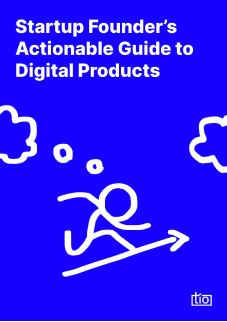How To Build a High-Converting Landing Page?

Landing pages are the key to leads, potential customers, first impressions, and engagement. A landing page is a page on your website where prospective visitors land when they click on the main source of traffic. This source can be an advertisement on a search engine, a blog post, or social media post.
No matter the source, a landing page is a web page specifically designed to capture leads and generate sales, and there is a vast difference between landing pages and home pages. A landing page is especially useful for increasing conversions.
In this post, we’ve covered all the steps involved in creating a high-converting landing page to help you build a high-converting landing page for any of your content, products, or services.
What Is A Landing Page?
A landing page is a single web page that interested customers can “land” on after clicking through from an email, advertisement, or other digital location. Landing pages convert higher than traditional homepages and are a great solution for properly marketing your business.
They are web pages that are designed to engage users and prompt the completion of the desired action. Leads, subscriptions, purchases, or any other conversion can be the goal.
Landing pages all have one thing in common: they want to capture your attention and make you understand the value of a product or service, which actually turned you into a visitor and raised your interest.
You can check our meet tio page which focuses on D2C companies as an example.
What Are The Differences Between Landing Pages And Homepages?
To understand what a landing page is, determining differences between other pages can be a good way. There are many differences between landing pages and home pages. The most obvious difference is the goal: a landing page is designed solely for visitors to complete a single action; a homepage is relatively more complex, with many components that engage the visitor’s attention, generating online visibility, brand awareness and supporting the company’s overall marketing strategy.
What Are The Types Of Landing Pages?
There are 4 types of common landing pages.
Lead Generation Landing Page
A lead generation or lead capture landing page is a single landing page where web visitors can submit their contact information in exchange for something of value, such as access to more information, a free trial, a discount, a white paper, or other free ebooks. Lead generation landing pages are a crucial part of most marketing and sales funnels because they are the first place potential customers see your products and services. They are also the last step in your funnel before you begin generating leads.
Click-Through Landing Page
The difference between lead generation and click-through is that while the first is entirely focused on converting a visitor into a client, the latter places more emphasis on attracting new clients and offers a clearer picture of what you’re offering. That being said, don’t expect to receive tons of traffic just from your click-through page. It’s not for everyone and every business, but when done correctly, it can be highly effective.
Squeeze Page
Squeeze landing pages are designed to be ultra-short and to the point. The purpose of this page is to simply get an email address, and usually only features one form field. The headline is usually large and bold and incorporates a direct call to action in order to convert interested leads into paying customers.
Sales Page
Sales landing pages are designed to succeed in landing sales and driving leads, but they must be built with a clear objective. Sales pages are an important stage along the way in the purchase process. They are written strategically to sell, so you know what it takes to design the right and have them convert visitors into customers.
How To Build A High-Converting Landing Page?
Landing pages are an effective way to increase conversions, thereby converting traffic into sales. Generally, landing pages focus on a single conversion goal, so visitors know exactly what action the page is designed for. They’re also designed to deliver a more focused visitor experience so that people only see what’s relevant to them depending on their landing page goal.
Before you begin to create your landing page, you must first decide what you want it to do. What will be your conversion? After you’ve determined your aim, consider your message. What is your solution to someone’s problem? After that, you may begin your keyword research. What do individuals look for when they need a solution to an issue that your sale, product, or newsletter can solve? Once you’ve determined your aim, messaging, and keywords, you can begin creating your landing page. Consider the items you want to include: bare minimum components can be a CTA and a form.
The end result of all this work is to create a landing page that converts. Once you’ve learned how to use each of the features above, you’ll have it in your power to create a landing page that does not just make a great first impression, but one that completes the job so your prospective customer becomes an actual customer.
It should be designed seamlessly with your business goals in mind and aimed at a specific niche. Your content should be free of errors, properly researched, and written or presented in a manner that your particular target audience can understand. While these are essential factors to consider, there are many others as well.
In conclusion, you need a landing page that looks attractive, has a good copy and is documented properly. If you have a problem creating a conversion-friendly landing page, it’s best to contact experts. In fact, there are many companies out there that specialize in creating landing pages for specific niches or products and services.
tio
5/26/2022
